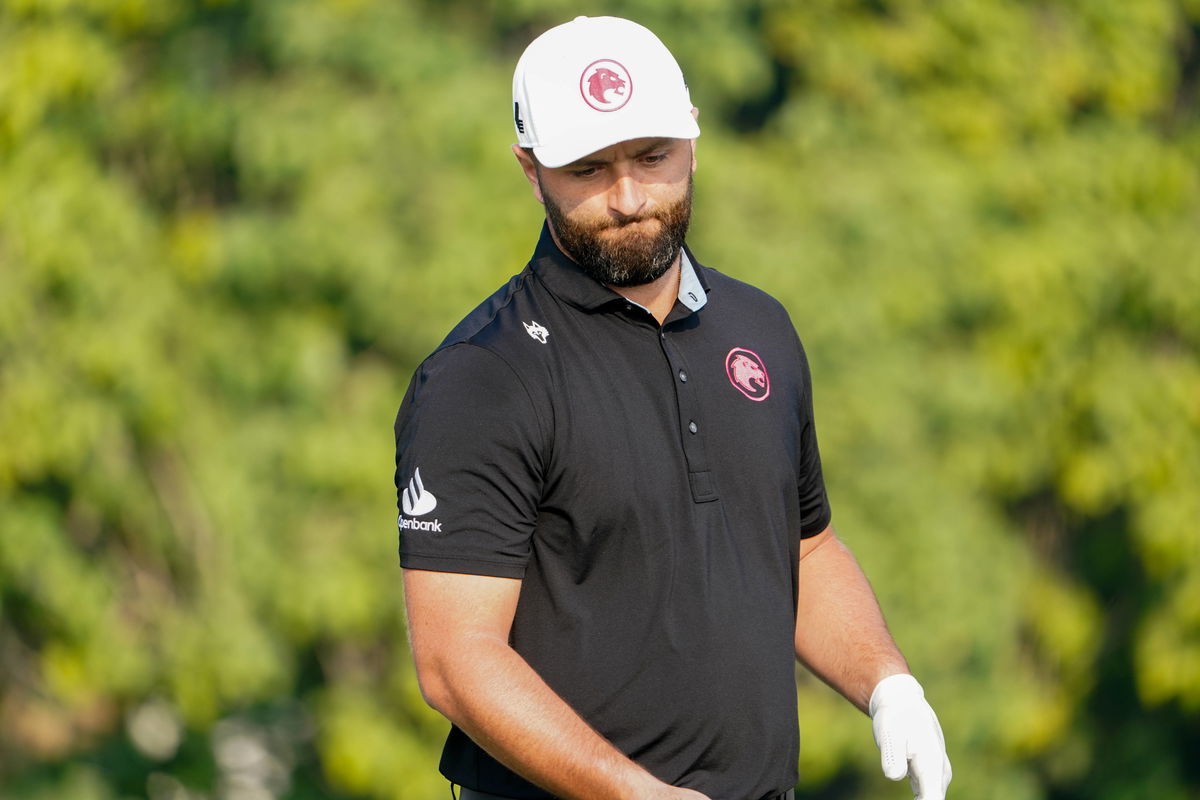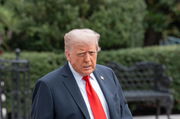
Imago
Hero Dubai Desert Classic Jon Rahm ESP on the 13th tee during round 2 of the Hero Dubai Desert Classic, Emirates Golf Club, Dubai, United Arab Emirates. 17/01/2025 Picture: Golffile Fran Caffrey All photo usage must carry mandatory copyright credit Golffile Fran Caffrey Copyright: xFranxCaffreyx *EDI*

Imago
Hero Dubai Desert Classic Jon Rahm ESP on the 13th tee during round 2 of the Hero Dubai Desert Classic, Emirates Golf Club, Dubai, United Arab Emirates. 17/01/2025 Picture: Golffile Fran Caffrey All photo usage must carry mandatory copyright credit Golffile Fran Caffrey Copyright: xFranxCaffreyx *EDI*
A lot of hope emerged in 2023 when the PGA Tour decided to come to the table and negotiate with LIV Golf for the future of the sport. Many were skeptical, but it seemed like the tension might finally ease, giving both fans and players a cooperative deal to look forward to. Two years later, however, there is still no update in sight. And who is to blame for this? Well, this player says it’s LIV.
Watch What’s Trending Now!
Mackenzie Hughes, talking to Gary Williams on 5 Clubs, tried to shed some light on how much of the friction came from LIV Golf itself. “I think that the [PGA] Tour is in a strong position. I think that the whole framework agreement with the PIF was tough because there there was certain things that you know they didn’t want to budge on, and the tour wanted. It was tough to meet in the middle.”
Initially, when LIV Golf first launched and lured away some marquee players, the PGA Tour was highly critical of it. They labeled it untraditional, and for a while, the golf world seemed split. But in 2023, Jay Monahan and co did a complete U-turn, agreeing to come together under a ‘framework agreement.’ The 5-page agreement talked about a ‘shared common goal’ and ‘promoting the game of golf globally.’ What stood out was that LIV players, who had previously been banned from the PGA Tour, would probably be allowed to compete in the PGA Tour events.
ADVERTISEMENT
“After two years of disruption and distraction, this is a historic day for the game we all know and love. How did we go from a confrontation to now being partners? We just realized that we were better off together than we were fighting or apart,” Monahan had said after the agreement. But despite that, progress stalled.
LIV Golf wins the YouTube highlights battle vs. the PGA Tour by more than 50% viewers.
This completes the season sweep. pic.twitter.com/yBzsGFGKiF
— Sekrah (@sekrah) August 26, 2025
Even earlier in the year, Monahan tried to temper expectations. While he said he could see a future where aspects of LIV Golf might be integrated into the PGA Tour, he added that “hurdles remain.” He emphasized that any agreement would need to preserve the Tour’s momentum with fans and partners, signalling that the ball was not entirely in their court. “We will not do so in a way that diminishes the strength of our platform.”
ADVERTISEMENT
Players, too, hinted at the stalemate. Rory McIlroy, speaking after one of the meetings, reminded fans, “It takes two to tango,” before adding, “I don’t think the PGA Tour needs a deal.” Hughes, who is also a member of the PGA Tour’s Player Advisory Council, meanwhile, framed it as a cautious acceptance. “I think that now golf is at a place where, you know, they exist, we exist, you know, we’re doing our thing. And, I think the tour has done a great job of, you know, putting their head down and, you know, driving our business forward.”
He’s right. PGA Tour till earlier this year, tried to conclude a deal. Several attempts were made by outside parties, like a February meeting at the White House with President Donald Trump, Monahan, PIF’s Yasir Al-Rumayyan, and Tiger Woods. But it did little to break the deadlock. While the statement from that session emphasized a shared passion for golf and the reunification of the sport, the deal remains in limbo.
ADVERTISEMENT
But the onus of hindrance in a deal should not just be credited to LIV. Because, reportedly, in April, the PGA Tour had rejected a $1.5 billion Saudi PIF offer due to certain LIV Golf demands.
And now with leadership changes at the PGA Tour, these dynamics also seem to have shifted. “With Brian Rolap now at the helm, I’m excited just because, you know, what he brings to the table, his experience, and, I think, yeah, the PGA Tour is in a great spot.” Replacing Jay Monahan from 2026, Brian Rolapp will take on the CEO duties of the Tour. In his debut address, Rolapp stated that he believes that the best collection of golfers in the world is on the PGA Tour. The numbers definitely back him up on this. The Tour has been strengthening its position by extending its partnership. The viewership has grown to an average of 2.969 million per broadcast.
But when it comes to LIV, Rolapp’s approach is clear. “I have not spoken to anyone from the Public Investment Fund. I’ve been here for three weeks, so my focus has obviously been on the TOUR and focusing on the TOUR and learning and starting to develop a bit of a vision for the future.” His approach suggests that the unification is probably not a priority anymore.
ADVERTISEMENT
What all points to is simple: while the PGA Tour was ready and willing to move forward, LIV Golf apparently has shown little flexibility. And with no deal in sight, the PGA Tour is trying to copy certain aspects of LIV, which does not sit right with players like Hughes.
Top Stories
Who Is Charley Hull’s Ex-Husband? Is LPGA Star Currently Dating?

Pro Suffers Disqualification at PGA Tour Q-School After Several Players Withdrew Abruptly

Golf World Feels Sorry for PGA Tour Hopeful as Meltdown Over Q-School Stress Is Caught on Camera

Donald Trump Puts Public Golf Courses on Notice Amid Control Dispute

Brooks Koepka Takes up New Role Amid LIV Golf Exit Rumors Reaching Boiling Point

Mackenzie Hughes’s alarm on the PGA-LIV rift
Mackenzie Hughes has never hidden his frustration over the PGA-LIV Golf saga. Despite moving up the rankings and gaining access to lucrative signature events after Jon Rahm‘s defection, Hughes last year highlighted how the focus on money and the constant back-and-forth between the tours has left men’s golf in “a sad place.” “Our economic model was sustainable. The LIV threat came along and all of a sudden we started to double the purses, and we’re asking sponsors to double their investment, and we’re giving them the same product.”
ADVERTISEMENT
And he is right, the PGA Tour has seen unprecedented growth in prize money. Take, for example, the 2025 TOUR Championship, which boasted a total purse of $40 million and $10 million for the winner – the highest ever in Tour history. Many signature events this year, including majors like the US Open and the Masters, featured prize pools exceeding $20 million. They even ensured that players finishing lower in the top 30 at the TOUR Championship walked away with substantial earnings, with the last-place finisher taking home around $335,000.
However, with such high purses from the sponsors of the events, it means that those sponsors in particular expect a good ROI. This then becomes a tricky path to tread over as it does not always happen favourly. The 2025 season saw various event sponsors walk out of their partnership with the PGA Tour, leaving events without any funding. The ending of the partnership with Wells Fargo is the most prominent among them.
In the end, the divide in the golf world or the conflict between the PGA and LIV has started to affect the sport, which will see its repercussions in the coming future.
ADVERTISEMENT
ADVERTISEMENT
ADVERTISEMENT

